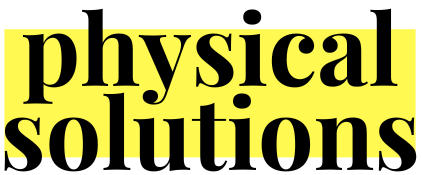The Extended Medicare Safety Net (EMSN) represents a crucial component of Australia’s healthcare system, designed to provide additional financial protection for individuals and families facing significant out-of-pocket medical expenses. Established to complement the standard Medicare Safety Net, the EMSN offers enhanced rebates for medical services delivered outside hospital environments.
The purpose of the Extended Medicare Safety Net
Introduced in 2004, the Extended Medicare Safety Net emerged from a recognition that certain demographics, particularly those with chronic conditions requiring frequent specialist consultations, were experiencinga substantial financial burden despite existing Medicare rebates. The scheme aims to ameliorate these costs by providing higher rebates once an annual threshold of out-of-pocket expenses has been reached.
How the Extended Medicare Safety Net works
The Extended Medicare Safety Net operates through a threshold-based system. When an individual’s or family’s cumulative out-of-pocket costs for out-of-hospital Medicare services exceed the designated threshold within a calendar year, they become eligible for significantly higher rebates, typically covering 80% of out-of-pocket costs for subsequent services.
It is worth noting that the EMSN operates in conjunction with the standard Medicare Safety Net. Whilst the standard safety net provides modest increases in rebates, the EMSN delivers substantially higher benefits, particularly for specialist consultations and certain diagnostic procedures. If you have the Medicare app, you can log in to see where your spend sits in the Medicare Safety Net and how much you have left.
Threshold categories
The Extended Medicare Safety Net features distinct threshold categories:
- Concessional and Family Tax Benefit Part A recipients: Lower thresholds apply to concession cardholders, recipients of Family Tax Benefit Part A, and individuals eligible for various pension schemes.
- General threshold: A higher threshold applies to individuals and families not qualifying for concessional rates.
The Department of Health reviews and adjusts these thresholds periodically to account for inflation and healthcare cost fluctuations.
Services covered on the Extended Medicare Safety Net
The EMSN encompasses a broad spectrum of out-of-hospital Medicare services, including:
- General practitioner consultations
- Specialist consultations
- Certain diagnostic imaging services
- Pathology tests
- Selected allied health services
However, the Extended Medicare Safety Net does not extend to hospital services, as these fall under different funding arrangements.
Registration requirements
For families, registration with Medicare is essential to combine out-of-pocket expenses towards reaching the threshold collectively. Couples, including de facto partnerships, and single parents with dependent children under 16 years may register as families. Medicare automatically registers singles and some categories of Medicare cardholders.
Benefit caps
To ensure fiscal sustainability, the Australian Government has implemented benefit caps on certain Medicare items. These caps establish maximum EMSN benefits payable for specific services, particularly those where significant fee inflation occurred following the EMSN’s introduction.
Accessing benefits
A notable advantage of the Extended Medicare Safety Net is its automatic application. Once registered appropriately and upon exceeding the relevant threshold, Medicare automatically calculates and applies the enhanced rebates to eligible services. Recipients need not complete additional paperwork to access these benefits.
Complementary programmes
The EMSN operates within a broader framework of healthcare safety nets, including:
- The standard Medicare Safety Net
- The Pharmaceutical Benefits Scheme Safety Net
- Various state-based healthcare support schemes
When utilised collectively, these programmes provide comprehensive financial protection against excessive healthcare costs.
Strategic considerations
Individuals with anticipated high medical expenses might consider:
- Scheduling non-urgent medical services within the same calendar year after reaching the threshold
- Ensuring proper family registration with Medicare
- Maintaining accurate records of medical expenses
- Inquiring about bulk-billing options where available
Recent developments to the Extended Medicare Safety Net
The EMSN has undergone several refinements since its inception, including threshold adjustments and the introduction of benefit caps for certain services. These modifications aim to balance fiscal sustainability with the programme’s original intent of providing financial relief to those facing substantial medical costs.
The Extended Medicare Safety Net represents a vital component of Australia’s healthcare financing architecture, providing significant financial protection for individuals and families facing substantial out-of-pocket medical expenses. By understanding its operation, thresholds, and registration requirements, Australians can better navigate the healthcare system and minimise financial burden during periods of intensive medical service utilisation.
For specific information regarding current thresholds and eligible services, individuals should consult the Department of Health website or contact Medicare directly, as these details are subject to periodic revision. Be sure to check out more information related to Australians on the website.







